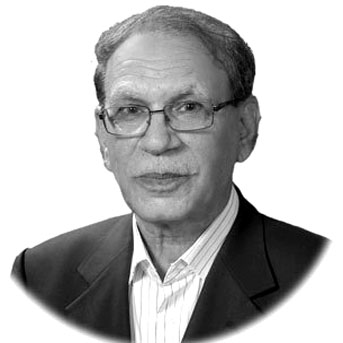Mohammad Jamil
INDIA has territorial disputes with almost all of its
neighbours at one time or another, and today it is
China, Pakistan and Nepal. India claimed to have resolved its un-demarcated border with Bhutan, Bangladesh and Sri Lanka; but it was undoubtedly through arms twisting, blackmailing and threatening posture of the overbearing power. Many a time, India reminded Bangladesh that it owed its independence to the support of Indian Government and its forces. India had once flexed its muscles with China in 1962, and still remembers the humiliation at the hands of Chinese security forces. The current standoff is the most serious face-off between the Indian and Chinese army personnel since 2017, when they engaged in a similar clash for 73 days at Doklam. Indian troops were then mobilized, what they said, to counter moves by the Chinese side to expand its presence along the border with Bhutan.
The situation was later defused through diplomatic channels. Border skirmishes are not new to the 3,488km (2,167-mile) frontier between India and China. The two countries fought a war in 1962, but the border issues remained unresolved. China claims about 90,000 square kilometers (35,000 square miles) in the Indian State of Arunachal Pradesh, referred to informally by some Chinese as Southern Tibet. India, on the other hand, claims sovereignty over 38,000 square kilometres (15,000 square miles) of the Aksai Chin plateau. Arunachal Pradesh is a State of India created on 20 January 1972, located in the far northeast. It borders the states of Assam and Nagaland to the south and shares international borders with Burma in the east, Bhutan in the west and China in the north. However, the major part of the territory is claimed by China as part of South Tibet.
The northern border of Arunachal Pradesh reflects the McMahon Line, a 1914 treaty between the United Kingdom and the Tibetan Government which was never accepted by the Chinese government. Writing in the Global Times newspaper, Long Xingchun, a senior research fellow at the Beijing Foreign Studies University, blamed New Delhi for the latest standoff. “India in recent days has illegally constructed defence facilities across the border into Chinese territory in the Galwan Valley region, leaving China with the option of making necessary moves in response,” he wrote. Meanwhile, Nepal feels emboldened by the standoff between Indian and Chinese troops. Three weeks ago, Nepal protested India’s inauguration of a new road to Tibet (China) that passes through territory claimed by Kathmandu. Earlier, Indian Defence Minister Rajnath Singh had inaugurated via video link the 80km road from Ghatiabagarh in northern Uttarakhand State to the Lipu Lekh Pass high in the Himalaya.
The pass is claimed by Nepal based on an 1816 treaty that defines its western border with India. Kathmandu also claims the adjoining and strategic Kalapani as a part of its territory. Anyhow, some experts argue that India’s increasing military capability and decision to change the status of Jammu and Kashmir in August 2019 also contributed to the latest flare up. “Indian Prime Minister Narendra Modi unilaterally changed the status of Jammu and Kashmir in August 2019, which I believe has made Beijing quite uncomfortable,” Derek Grossman, a senior defence analyst for Rand Corporation said. In its 73 years as a free country, India has never faced a more serious crisis. Already its institutions – its courts, much of its media, its investigative agencies, its Election Commission – have fallen in line with Modi’s policies. The political opposition is withered and infirm.
There is something more to that: The idea of Hindutva, in its fullest expression, will ultimately involve undoing the Constitution and unravelling the fabric of liberal democracy, as constitutional niceties aren’t compatible with the BJP’s blueprint for a country in which people are graded and assessed according to their faith. Since the passage of the Citizenship Act, the vociferous protests, the brutality of the police, the viciousness of the politics only reflected how existentially high the stakes have become. Modi is implementing the RSS ideology which is based on Nazism. From day one of its inception in 1925, RSS was focused on mobilizing and strengthening the Hindutva recruits to fight against the Muslims. In 1927, within two years of its creation, the RSS launched its first Muslim cleansing operation in its birthplace in Nagpur in Maharashtra.
Its militants had launched an organized attack against the local Muslims and forced the Muslims to leave the city. In fact, the resurgence of such Hindu vengeance forms the foundation of Hindutva politics in India and gave birth to the world’s largest so-called NGO RSS. The sole objective of RSS is to make India a Hindu State. (Andersen, Walter; Damla, Shridhar, 1987). While M.S. Golwalker became the RSS President in 1940, he set it a goal not to fight against the colonial British occupation. Muslims were stipulated as the number one enemy and not the British occupation. The RSS cadres consider every Indian Muslim a traitor-cum-termite and a Pakistani insider. (Ashish Nandi, 2002). For its terrorist activities, the RSS was banned four times in the past: in 1947, in 1948, in 1975 and in 1992. During British Raj also, it was banned for its communal terrorism by the provincial government of Punjab in 1947. In 1948, it was banned for killing Gandhi. In 1992, it was banned for destroying the historic Babri Mosque for a while. Since Narendra Modi – a lifelong member of RSS, became the Prime Minister, everything changed. The RSS is no more alone in its mission; the whole state apparatus, the media, the police and the army are now working hand in hand to attain the Hindutva objective.
—The writer is a senior journalist based in Lahore.










